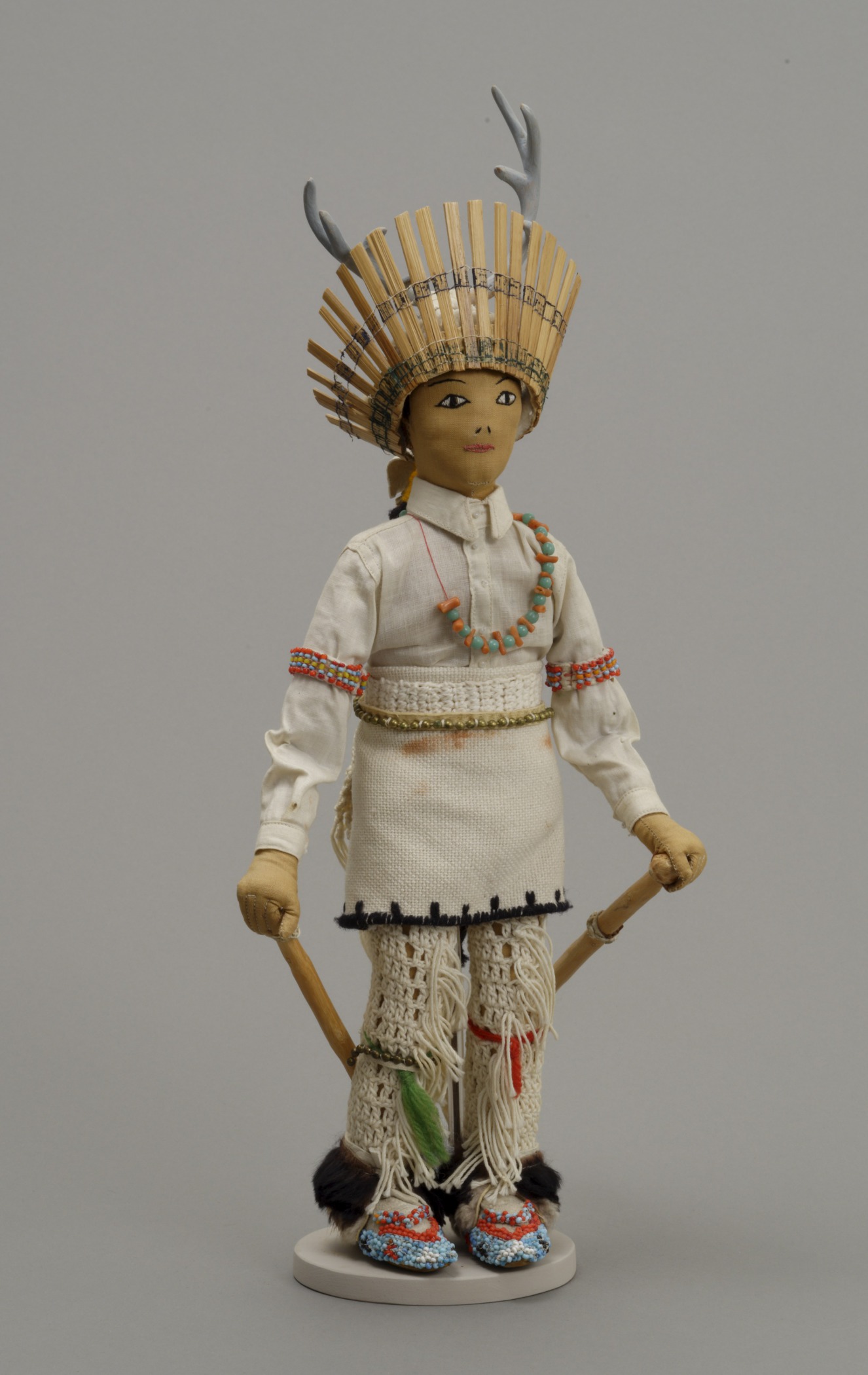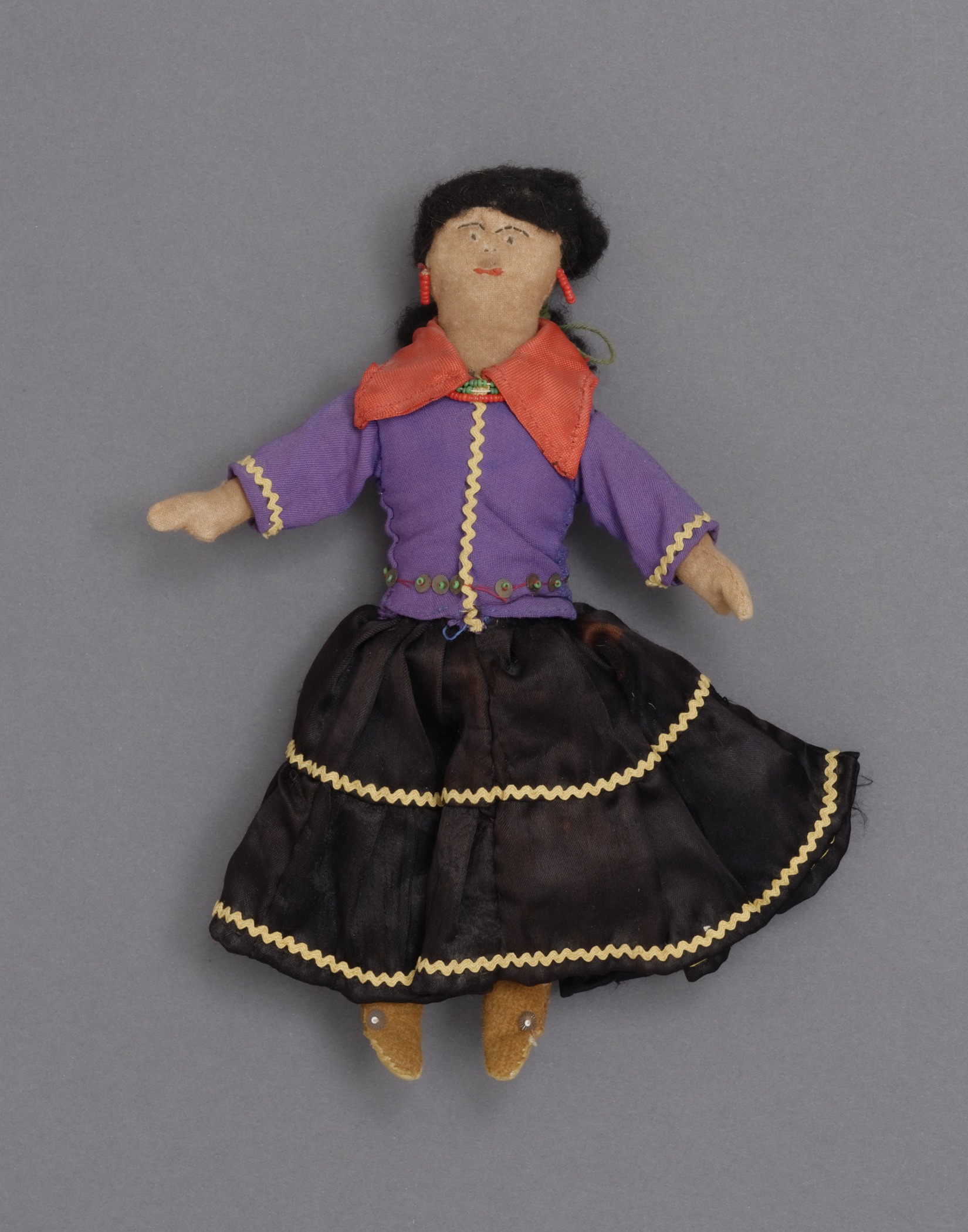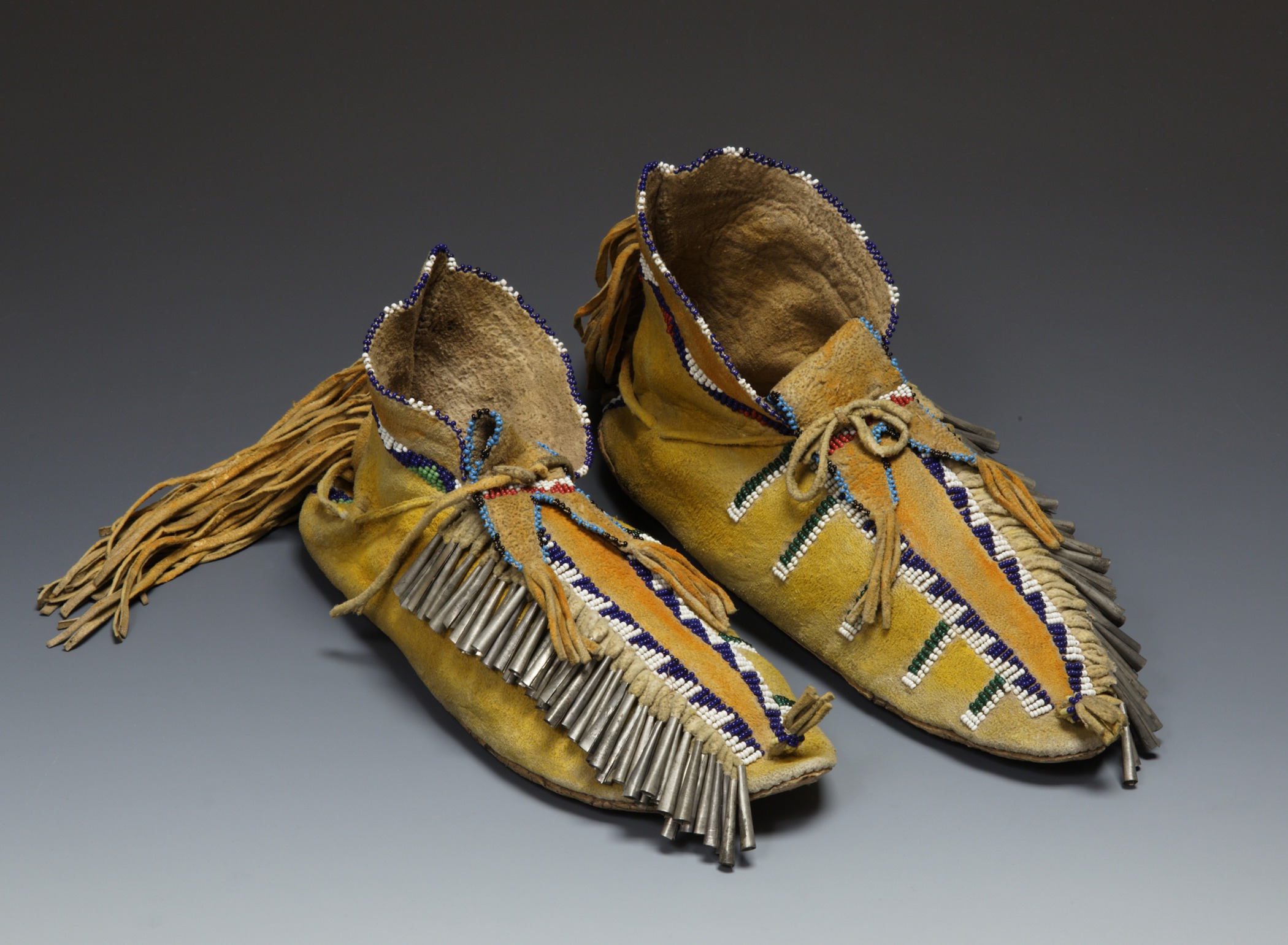Diné (Navajo), Arizona
Doll representing a Diné woman
- 1954
- Cloth body, satin, cotton cloth, glass trade beads, wool, string, buckskin, sequins, ric-rac, and cloth collar
- 9 3/4 × 7 3/16 × 3 9/16 in.
Hood Museum of Art, Dartmouth College: The Wellington Indian Doll Collection, Gift of Barbara Wellington Wells; 987.35.26764
visibilityLook & DiscussAn unknown Diné (Navajo) doll maker created this doll. Her clothing reflects the influence of the Spanish on Diné clothing. It is typical of the type of clothing worn by Diné women in the 1950s.
Explore the Object
This doll demonstrates the way in which Diné fashion has changed. Although clearly influenced by Spanish clothing and almost entirely made from store-bought materials—cloth, rickrack, sequins, wool, and thread—the clothing still proclaims Diné identity.
The doll wears a purple cotton blouse with yellow rickrack down the front and on the sleeves. It has a wide red collar. Smoked sequins with green beads in the center circle the doll’s waist. This accessory represents a type of silver concha belt the Diné created, beginning in the 19th century, from German silver disks. Her black skirt is long and full and decorated with rickrack bands around the hem. She has a dark blue petticoat. This is probably an everyday skirt, rather than a ceremonial one, because it has only one petticoat. The sequins with a bead in the center decorating her buckskin moccasins may represent the silver cones typical of Diné moccasins. Around her neck, she wears three strands of beads in green and red, and in her ears, she wears green and red loop earrings. Her hair is made of black wool. The doll maker sewed on her facial features and painted or rubbed her skin with liquid to add color.
Dolls like this one were made for sale, but also as playthings for Diné children to prepare them for their roles as adults. A young girl might have played with this doll, admiring the bright colors of the cloth, the rickrack and beads, and the skill of the doll maker. She might have received scraps of cloth or hide to learn how to sew herself.
learn more
In this video, novelist Louise Erdrich (Ojibwa), Dartmouth Class of 1976, speaks about her childhood memories playing with dolls from the Wellington Collection, now in the Hood Museum of Art's collection.
For an excellent teacher resource on Native American dolls, access the Fall 2004 issue of Smithsonian in Your Classroom by the The National Museum of the American Indian.




